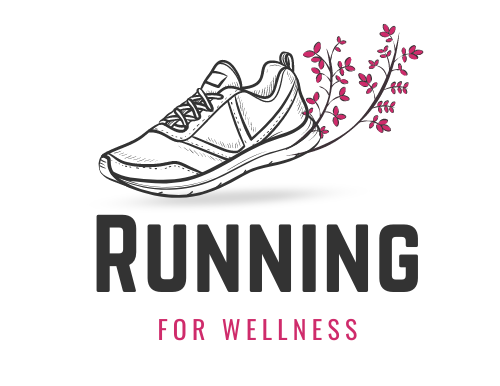Twelve weeks is enough time to ramp up your long runs gradually (no injuries, please), build your fitness, and get comfortable with the routines of running.
It’s short enough that you won’t lose motivation, and long enough to see real changes in your body and mindset. And yes, you will surprise yourself—every week, you’ll look back at what you’ve done and think, “I never thought I could do that.”
You don’t need to run every day or slog through exhausting workouts. Here’s the winning formula for most new half-marathoners:
- 3 to 4 days of running each week.
- One “long run” each week (this gets longer each week—slow and steady wins the race).
- 2 short, easy runs (just keeping your legs moving and building fitness).
- Cross-training or active rest: Think cycling, yoga, swimming, or a long walk. Keeps you healthy and prevents burnout.
- Real rest days: They matter as much as the running.
Below is a week-by-week plan you can stick to—even with a busy schedule. Adjust days as needed to fit your life.
The 12-Week Half Marathon Training Plan
Week
Mon
Tue
Wed
Thu
Fri
Sat
Sun
1
Rest
2-mile run
Rest/XT
2-mile run
Rest
3-mile run
Rest
2
Rest
2-mile run
Rest/XT
2-mile run
Rest
4-mile run
Rest
3
Rest
2.5-mile run
Rest/XT
2.5-mile run
Rest
5-mile run
Rest
4
Rest
3-mile run
Rest/XT
2-mile run
Rest
6-mile run
Rest
5
Rest
3-mile run
Rest/XT
3-mile run
Rest
7-mile run
Rest
6
Rest
3-mile run
Rest/XT
3-mile run
Rest
8-mile run
Rest
7
Rest
3-mile run
Rest/XT
3-mile run
Rest
9-mile run
Rest
8
Rest
3-mile run
Rest/XT
3-mile run
Rest
10-mile run
Rest
9
Rest
3-mile run
Rest/XT
3-mile run
Rest
11-mile run
Rest
10
Rest
3-mile run
Rest/XT
3-mile run
Rest
12-mile run
Rest
11
Rest
3-mile run
Rest/XT
2-mile run
Rest
6-mile run
Rest
12
Rest
2-mile run
Rest/XT
Rest
Rest
Race Day (13.1)
Rest
Week 1: Building the Habit

Mileage
Total: 7 miles
What to Expect
This week is all about setting a routine, not about speed or distance. Focus on getting used to running three times a week, even if you have to mix in some walking. Every step you take builds the foundation for the next twelve weeks.
Advice
Don’t worry if you feel slow or awkward—everyone does when they start! If you’re nervous, do your runs somewhere familiar, like your neighborhood or a local park.
Use this week to dial in your running shoes and make sure you don’t get blisters. Cross-training (walking, biking, yoga) on an off day can help loosen up tight muscles.
Week 2: Settling In
Mileage
Total: 8 miles
What to Expect
You’re repeating the same short runs as last week, but your Saturday long run nudges up to 4 miles. It may feel like a stretch—slow down and take walk breaks if needed.
This is not about pace; it’s about showing your body you can handle a little more.
Advice
Eat something small before your long run (banana, toast). Bring a water bottle if it’s warm or you’re running longer than 45 minutes.
Congratulate yourself for hitting your first “long run” milestone—4 miles is real progress.
Week 3: Confidence Builder
Mileage
Total: 10 miles
What to Expect
The weekday runs get a little longer, and your Saturday long run jumps to 5 miles. This is the first week that may test your stamina and resolve.
Don’t panic if you feel tired—your body is learning to recover and adapt.
Advice
Stretch after every run, especially your calves and hips. Use a foam roller or tennis ball to work out any knots.
If motivation dips, find a podcast or running playlist that keeps you moving. Don’t be afraid to walk parts of your long run.
Week 4: Settling into Routine

Mileage
Total: 11 miles
What to Expect
This week gives you a taste of real half-marathon training: three miles midweek will start to feel “normal,” and your long run is now close to half the race distance.
You may notice some soreness or fatigue—that’s normal, but make sure you’re sleeping and hydrating well.
Advice
Try to run your long run at a “conversation” pace—slow enough that you could chat with a friend. Bring water and maybe a small snack (energy chew, dried fruit) to experiment with fueling.
Week 5: Testing Your Limits
@hallieklanke This trend is so fun but don’t ask me how many tries this took me💀😅 #run #running #runner #runnergirl #fun #trending #trend #longrun #summerrunning #halfmarathontraining #morningrun #runtok #runningcommunity #fyp #fy #fypシ #summer #7miles ♬ original sound – Abbey Engel
Mileage
Total: 13 miles
What to Expect
At this point, you might surprise yourself. You’ll cover a half-marathon’s worth of miles this week, but split up over three days.
The 7-mile long run is a mental game—break it up into sections and celebrate every mile.
Advice
This is a great time to test gear: try different socks or running belts to see what works. If something hurts (sharp pain, limping), back off and rest.
Recovery is part of training! Take an Epsom salt bath or stretch extra on rest days.
Week 6: Hitting Your Stride

Mileage
Total: 14 miles
What to Expect
The routine will feel more familiar now. Eight miles is a big jump—don’t be intimidated. Focus on pacing: it’s normal to slow down the last few miles.
You’re well past halfway to the half marathon!
Advice
Practice what you’ll eat/drink during the race. Try energy gels, chews, or real food (orange slices, pretzels). Learn what your stomach can handle so there are no surprises on race day.
Listen to your body—sore muscles are okay, but joint pain is a red flag.
Week 7: Staying Consistent

Mileage
Total: 15 miles
What to Expect
You’ll probably feel some fatigue, but you’re now capable of running 9 miles. This week, mental discipline matters. Remind yourself why you started and visualize crossing the finish line.
Advice
Check your shoes—if you’re past 300 miles, you may need a new pair. Treat yourself to a new playlist or run with a friend for extra motivation. In the long run, walk as needed, but keep moving forward.
Week 8: Pushing Through

Mileage
Total: 16 miles
What to Expect
Ten miles is a milestone most people never hit—be proud! This is the time to start thinking about your race strategy and what you want to eat, wear, and drink on race day.
Long runs are now about mental strength as much as physical.
Advice
Plan your long run on part of the race course, if possible, or pick a scenic route to make it fun. After your long run, refuel with carbs and protein (sandwich, smoothie).
This is a good week to review your progress—you’ve come a long way.
Week 9: Getting Real
Mileage
Total: 17 miles
What to Expect
You’re so close. The 11-mile run will test your endurance and give you a taste of race day. You may feel nervous, but trust your training—your body can handle more than you think.
Advice
Start your long run early to simulate race morning. Use all your planned gear, fuel, and hydration. Afterward, rest, stretch, and do something fun to reward yourself for a huge accomplishment.
Week 10: Peak Long Run

Mileage
Total: 18 miles
What to Expect
This is your biggest mileage week and your longest run before the race. It’s a full dress rehearsal—practice everything: eating, drinking, gear, and even what socks you’ll wear.
Advice
Don’t try to run the 12 miles fast; keep it slow and steady. Walk if you need to, and focus on finishing. After this week, you’ll start tapering, letting your body recover and get stronger before the big day.
Week 11: Taper and Recover
Mileage
Total: 11 miles
What to Expect
This week is about reducing fatigue and letting your body rebuild. The long run drops to 6 miles, which should feel manageable.
You may feel “antsy” or worried about running less, but trust the process.
Advice
Focus on sleep, stretching, and healthy food. Avoid trying anything new. Use the extra time to plan your race logistics—how you’ll get to the start, where to park, and what you’ll eat the night before.
Week 12: Race Week!

Mileage
What to Expect
This week is all about fresh legs and calm nerves. Run just twice—2 miles easy, then rest until race day. Focus on hydration and eating simple, familiar foods.
Advice
Lay out everything the night before—shoes, socks, bib, fuel, headphones. Eat your usual pre-long-run breakfast on race morning.
Start the race slow, pace yourself, and soak in the experience. The crowd, the energy, and the finish line will carry you farther than you think. You’ve earned every mile—enjoy it!
How to Make the Plan Work for You

Start With What You Have
You don’t need fancy gear. A comfortable pair of running shoes (fitted at a real running store if possible), some moisture-wicking socks, and clothes that won’t chafe are your basics.
The best “training tool” is your consistency.
Take Rest Seriously
Don’t run every day—even pros don’t! Your body needs time to recover, rebuild, and adapt. Muscles get stronger while you rest, not while you run.
If you’re feeling sore, tired, or on the edge of a cold, swap a run for a walk or a rest day. Skipping a run is better than getting injured.
Make Long Runs About Time, Not Speed
Your long run each week is the real game-changer. Don’t worry about pace—go slow enough that you could have a conversation (or at least not gasp for air).
Walk breaks are totally fine. The goal is to spend time on your feet, getting used to the distance and the mental challenge.
Fuel and Hydrate Like a Runner
Eat something small (like a banana or toast) before longer runs. Bring water if you’ll be out for over an hour.
After runs, refuel with a mix of protein and carbs—think chocolate milk, yogurt, or a turkey sandwich. Race day is not the time to try new foods or drinks. Practice with what you’ll use in the race.
Listen to Your Body and Adjust
Life happens. If you miss a run or have a bad day, just pick up where you left off—don’t try to “make up” missed miles.
A little ache is normal, but pain that changes your stride, sharp pain, or anything that gets worse with running? Rest and see a doc if needed.
How Your Mileage Builds
Week
Weekly Mileage
1
7
2
8
3
10
4
11
5
13
6
14
7
15
8
16
9
17
10
18
11
11
12
17 (with race)
This table shows exactly how your training mileage increases week by week—one of the most important factors in a safe and successful half-marathon build-up. In the early weeks, the plan starts gently, giving your body time to adapt to the demands of regular running and helping you avoid injury or burnout.
By gradually adding only a mile or two each week, you allow your muscles, joints, and cardiovascular system to strengthen without overwhelming your body.
Around week five, you’ll notice your total mileage climbing into double digits for the first time—this is when you might start to feel like a “real runner,” and your confidence in handling longer distances will grow.
The plan peaks at 18 miles in week 10, which includes your longest long run and the highest total volume. This is by design: it’s your final, big push before race day, giving you the stamina and mental strength to cover 13.1 miles
After that peak, week 11 drops your mileage back to 11 miles—a deliberate taper that allows your legs to recover, rebuild, and feel fresh for the race. Finally, week 12 includes your half marathon itself, with a slight reduction in training early in the week to maximize your energy and focus for the big day.
This gradual, stepwise approach is what makes finishing a half marathon possible for so many beginners. It reduces the risk of overuse injuries and makes every increase in mileage manageable, giving you both the fitness and the confidence to not just finish your race, but truly enjoy the entire experience.
Frequently Asked First-Timer Questions
Not. There’s a reason so many beginners (and plenty of experienced runners, too) use a run-walk strategy in both training and on race day. It’s completely normal—and often smart—to take short walk breaks, especially during long runs or tough stretches of the course.
Many successful half-marathoners run for a few minutes, then walk for one, repeating that cycle the whole way. Some people walk up every hill or through every water stop.
The goal isn’t to run nonstop—the goal is to cross the finish line healthy, proud, and smiling. If you mix in walking and still finish strong, you’re every bit as much a half-marathoner as someone who runs the whole way.
Life gets busy, injuries or illness pop up, or maybe you just need a mental break. Missing a week is not the end of your training or your goal. The most important thing is to simply pick up where you left off—don’t try to cram in missed runs or double up on mileage, which can increase your risk for injury.
The real secret to half-marathon success is long-term consistency, not a “perfect” streak. A single missed week won’t undo months of progress. When you get back, keep your runs easy and focus on rebuilding the routine.
If you miss several weeks, you might consider repeating a week or two before progressing, or even pushing your race date back—but most of the time, you’ll bounce back faster than you think.
If you feel a sharp pain, persistent soreness, or anything that changes your normal stride, listen to your body and rest. Minor aches are common, especially as you build new mileage, but don’t try to “push through” pain that’s getting worse. Resting for a few days early can prevent a long-term injury.
You can maintain fitness with cross-training—swimming, biking, or even pool running—while giving your legs a break. If pain lingers, see a physical therapist or sports doctor. Remember, there will always be another race on the calendar, but you only get one body.
Long-term health is worth far more than any finish line. Most importantly, know that taking a break to heal is not failing—it’s training smart.
The Bottom Line

Running your first half marathon is about progress, not perfection. It’s okay to be nervous, to walk some hills, or to wonder if you’re “ready.” Trust the plan, give yourself grace, and celebrate every milestone—because each mile is proof of what you’re building.
By the time you line up on race day, you’ll be stronger, more confident, and ready for that finish line feeling that only you can earn.
Ready to start? Lace up, follow the plan, and let the adventure begin. And if you need a little motivation, gear tips, or race recommendations along the way, reach out—I’m always happy to help another runner cross that line!
Related Posts:
- Top 400 Hilarious Gym Quotes to Keep You Motivated
- 25 Simple Running Motivation Tips To Get You Moving
- How Long Does It Take to Train for a Half Marathon?
- How Far Is a Half Marathon? Everything You Need to Know
- How Can You Start a Career as a Running Coach?
- 80 Best Motivational Cross Country Running Quotes 2025







